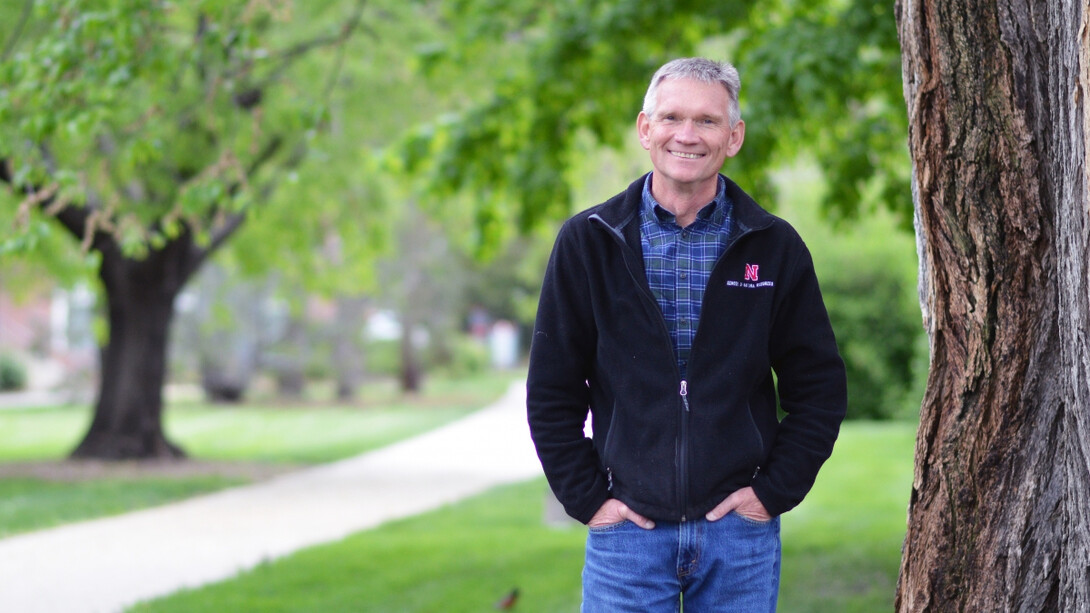
Last year on a student trip to Africa, John Carroll watched a 19-year-old student change a tire for the first time on a Toyota Land Cruiser miles from any town or city.
The pride the student felt after tackling a problem she hadn’t encountered before was palpable, Carroll said. He was proud too. Solving new problems, he believes, is a big part of the power of the hands-on, experiential learning opportunities offered by the University of Nebraska–Lincoln.
“One of the parts of experiential learning that is so important is the confidence it gives students in their ability to do new things,” said Carroll, director of the School of Natural Resources.
After leading the school for a decade, Carroll has announced his plans to step down in July. He plans to stay on as a faculty member.
Opportunities for hands-on and experiential learning within the school have expanded under Carroll’s leadership, and today include partnerships with the San Diego Zoo, Nebraska Game and Parks Commission and Lincoln Public Schools. Providing opportunities for students to learn new things, test what they’re learning in the classroom and build confidence is something Carroll counts as a highlight of his time leading the school.
“John’s vision, enthusiasm and constant quest to try to new things have helped shape SNR into the collaborative, forward-thinking and welcoming place that it is today,” said Mike Boehm, Harlan Vice Chancellor for the Institute of Agriculture and Natural Resources. “I am grateful for his leadership and am excited for his next chapter of service to SNR.”
Carroll started serving as the School of Natural Resources’ director in July 2013. He previously held faculty positions at the University of Georgia, PennWest California, University of North Dakota and University of Minnesota Crookston. He also spent three years as a senior research scientist at what is now the Game and Wildlife Conservation Trust in Fordingbridge, England.
When Carroll joined Nebraska U, School of Natural Resources faculty were recently settled into the newly renovated Hardin Hall. It marked the first time the school was under a single roof, having previously been spread out across various East Campus buildings. Carroll sought to help build a sense of unity and shared vision among the fisheries and wildlife biologists, climatologists, ecologists, foresters, water scientists and faculty across other diverse disciplines. The school adopted the unofficial tagline “integration and identity,” which, Carroll said, put words to the SNR faculty’s willingness to embrace interdisciplinary research, as well as their desire to contribute to the advancement of their own specific research areas. Today, faculty are united, engaging in interdisciplinary research with scholars within the school and colleagues across the university and other institutions.
Watching both students and faculty succeed has been Carroll’s favorite part of the role, and that is one he will get to continue. He will teach undergraduate and graduate classes and continue to advise two doctoral students – both of whom are studying elephants. He will also continue to take students on the annual study-abroad trip to Africa.
“When I take the students to Africa, they come back a month later and they’ve matured five or six years,” he said. “All the stereotypes go out of their heads, and they learn a lot about themselves. Those lessons translate to a lot of other things in life.”
A national search has been launched to name the university’s next director of the School of Natural Resources. Learn more here.







